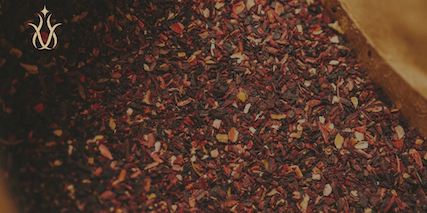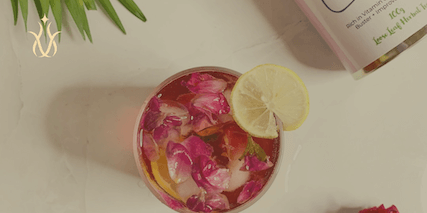Hibiscus isn’t just a beautiful flower—it’s also a powerhouse of medicinal benefits. Rich in antioxidants, hibiscus has been shown to help reduce high blood pressure, support healthy cholesterol levels, and aid in weight management. This detailed post explores how the natural compounds in hibiscus can boost heart health, combat inflammation, and even support liver health. Plus, get expert tips on preparing and enjoying hibiscus in teas, supplements, and other healthful concoctions.
What is Hibiscus?
Hibiscus refers to a genus of flowering plants in the mallow family, Malvaceae. The most commonly studied species for medicinal purposes is Hibiscus sabdariffa, also known as roselle. It has been traditionally used as a food, in herbal drinks, and as a flavouring agent in the food industry.
Hibiscus, particularly Hibiscus sabdariffa, is a plant with a diverse range of traditional uses and pharmacological activities, supported by both in vitro and in vivo studies, as well as some clinical trials.
Pharmacologically, Hibiscus sabdariffa has demonstrated a range of effects, including antibacterial, antioxidant, nephroprotective, hepatoprotective, lipid metabolism regulation, antidiabetic, and antihypertensive properties.
These effects are thought to be due to its rich phytochemical content, including phenolic acids, organic acids, and anthocyanins.

Nutritional Components of Hibiscus
The nutritional components of Hibiscus sabdariffa, include a range of carbohydrates, organic acids, tocopherols, fatty acids, vitamins, minerals, and bioactive compounds.
Specifically, glucose is a significant sugar present, malic acid is the primary organic acid, α-tocopherol is a notable tocopherol, and linoleic acid is a key fatty acid.
The calyces of Hibiscus sabdariffa contain carotenoids such as all-trans-lutein and all-trans-β-carotene and phenolic compounds, including delphinidin 3-sambubioside and 3-caffeoylquinic acid.
The leaves, calyces, and seeds of Hibiscus sabdariffa have been analyzed for their nutritional content. They reveal the presence of carbohydrates, crude protein, crude fat, crude fibre, energy, ash, moisture content, and substantial amounts of vitamins A, C, and E. The mineral content includes calcium, magnesium, and iron, which are present in amounts higher than the recommended daily allowance for adults.
Medicinal Benefits of Hibiscus
Clinical studies have validated various medicinal properties of Hibiscus sabdariffa.
A systematic review and meta-analysis by Ellis et al. demonstrated that hibiscus consumption resulted in significant reductions in systolic blood pressure, particularly in individuals with elevated baseline blood pressure, and reductions in low-density lipoprotein (LDL) cholesterol levels compared with other teas and placebo.
Another systematic review and meta-analysis by Wahabi et al. found that Hibiscus sabdariffa reduced blood pressure more than black tea but was less effective than ACE inhibitor medication.
Additionally, a systematic review and meta-analysis by Aziz et al. assessed the impact of Hibiscus sabdariffa on blood lipids but did not find a significant effect when compared with placebo, black tea, or diet.
Furthermore, Bule et al. conducted a systematic review and meta-analysis of randomized clinical trials and found that Hibiscus sabdariffa significantly reduced fasting blood glucose and low-density lipoprotein (LDL) cholesterol levels. However, no significant changes were observed in total cholesterol, high-density lipoprotein (HDL) cholesterol, and triglycerides compared to placebo.
These studies suggest that Hibiscus sabdariffa has antihypertensive and lipid-lowering effects, as well as antidiabetic properties. However, the literature also indicates the need for further research to establish effective dosages and to confirm these effects in larger, more diverse populations.

Medicinal Properties of Hibiscus
Hibiscus sabdariffa, commonly known as Roselle, has been recognized for its diverse pharmacological properties. The medicinal properties of hibiscus include antihypertensive, anti-inflammatory, antimicrobial, and diuretic effects. The antihypertensive properties have been attributed to the inhibition of angiotensin-converting enzyme (ACE) activity by anthocyanins such as delphinidin-3-O-sambubioside and cyanidin-3-O-sambubioside.
These compounds competitively inhibit ACE, which may contribute to the blood pressure-lowering effects observed in humans. Additionally, hibiscus has been shown to improve metabolic health, with studies reporting effects on fasting blood glucose, insulin sensitivity, and lipid profiles.
The anti-inflammatory properties are evidenced by its impact on inflammatory markers such as MCP-1 and TNF-α.
Hibiscus extracts have also demonstrated antibacterial efficacy against various strains, suggesting a potential role in urinary tract infection management.
Furthermore, the diuretic activity of hibiscus has been confirmed, with extracts showing significant diuretic and natriuretic effects at various doses.
The therapeutic potential of hibiscus is supported by its content of phenolic compounds and essential amino acids, which contribute to its pharmacological effects.
However, the specific dosages for these effects are not well established in the medical literature and require further research to determine optimal therapeutic doses.
Potential Side Effects Associated with the Medicinal Use of Hibiscus
The potential side effects or risks associated with the medicinal use of Hibiscus sabdariffa, as identified in the medical literature, are generally minimal. The review by Hopkins et al. indicates that Hibiscus sabdariffa has a low degree of toxicity, with no evidence of hepatic or renal toxicity resulting from its consumption, except for possible adverse hepatic effects at high doses.
Additionally, while Hibiscus sabdariffa acts as a diuretic, it does not significantly influence electrolyte levels in most cases. Da-Costa-Rocha et al. also support the safety and tolerability of Hibiscus sabdariffa, noting its excellent safety record.
However, it is important to consider the potential for herb-drug interactions, as highlighted by Nunes et al., particularly in patients with cardiovascular dysfunction or those under medication treatments. The review emphasizes the need for consumers to analyze product labels carefully and for health professionals to advise patients about possible interactions between drugs and herbal products like Hibiscus sabdariffa.
Conclusion
Hibiscus sabdariffa, commonly known as Roselle, has been associated with a variety of health benefits.
It is important to note that while these findings are promising, more well-designed controlled clinical trials are needed to confirm these effects and to establish appropriate dosages for therapeutic use.
The safety and tolerability of Hibiscus sabdariffa have been reported as excellent, but as with any therapeutic intervention, individual patient factors and potential interactions with other medications should be considered.
Disclaimer: This article is for informational purposes only and should not replace professional medical advice. If you have specific concerns or medical conditions, it is recommended to consult with a healthcare professional for personalised guidance and support.
Resources
A Review of the Effectiveness of Hibiscus for Treatment of Metabolic Syndrome.
Jeffery TD, Richardson ML.
Journal of Ethnopharmacology. 2021;270:113762.
Almajid A, Bazroon A, AlAhmed A, Bakhurji O.
Cureus. 2023;15(11):e49309.
.
Da-Costa-Rocha I, Bonnlaender B, Sievers H, Pischel I, Heinrich M.
Food Chemistry. 2014;165:424-43.
Jabeur I, Pereira E, Barros L, et al.
Food Research International (Ottawa, Ont.). 2017;100(Pt 1):717-723.
Hibiscus Sabdariffa Extract Lowers Blood Pressure and Improves Endothelial Function.
Joven J, March I, Espinel E, et al.
Molecular Nutrition & Food Research. 2014;58(6):1374-8.
Salami SO, Afolayan AJ.
Scientific Reports. 2021;11(1):1030.





